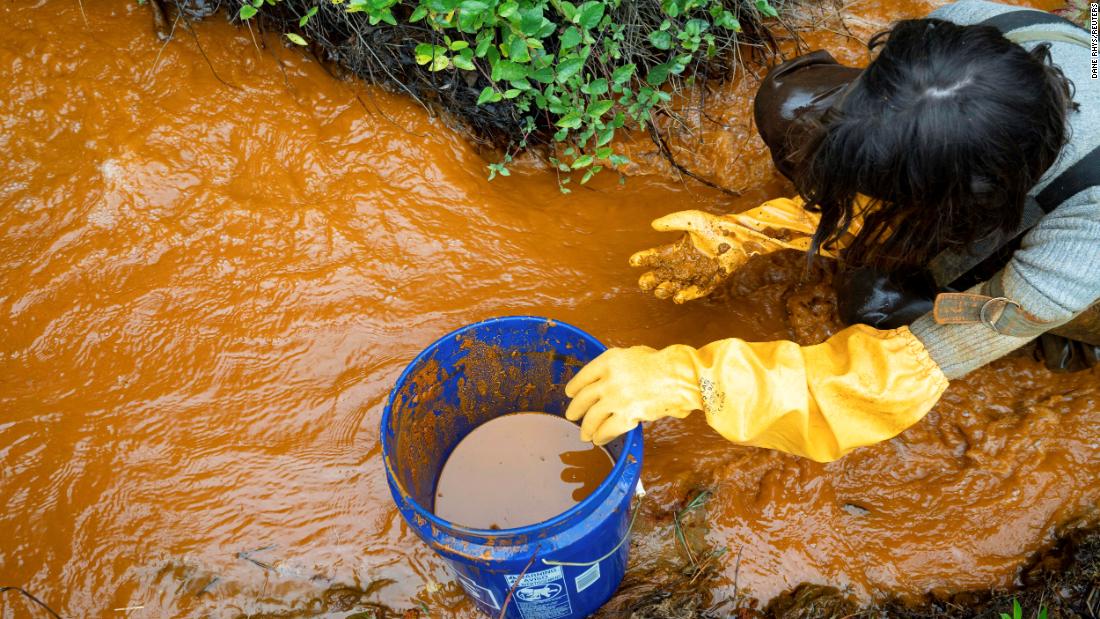
Rivers can be cleaned up by neutralizing the acidity of AMD, but it’s an expensive process. But two professors at Ohio University have come up with a way to fund the clean-up of polluted rivers by extracting the iron oxide — a substance commonly used to make pigments — and turning it into artist-grade paint.
Guy Riefler, an environmental engineer and Ohio University professor, has been working to tackle the problem for the last 15 years.
“It’s a nuisance and an eyesore and an embarrassment really to the population. And because it’s a poor area, it really doesn’t get the attention it deserves,” Riefler explains.
Riefler landed on the idea of extracting iron oxide from the polluted water and turning it into color pigments, which could be sold to further fund the clean-up of AMD. But he didn’t know enough about paints to determine what made them good quality.
Coincidentally, a decade ago, Ohio University art professor John Sabraw went on a faculty tour of acid mine discharge sites and experimented with making paint from a jar of polluted stream water — without much success.
The pair began working together to turn extracted iron oxide into artist-quality paint. Their collaboration has helped take the idea from “an interesting little science project” to something bigger, as Riefler developed a small-scale process to neutralize the acidity of contaminated streams and extract iron oxide particles — which he says is the predominant metal pollutant in Ohio’s acid mine seeps.
“The modern artist is very good at engineering solutions to problems,” he says. “I can’t tell you how many times I got to a roadblock and I bounce it off John … he’d come up with something that I didn’t think of and just took us to the next level.”
“Every single minute, 1,000 gallons of water is coming out of this abandoned mine. It’s got a lot of iron and it’s acidic,” says Michelle Shively MacIver, True Pigments’ director of project development. “Very little life can live in an area that looks like this.”
Once the treatment facility is operational, True Pigments aims to extract approximately 2 million pounds of iron oxide per year and clean up seven miles of stream — starting from Sunday Creek to the opening of Hocking River — according to MacIver.
“Our hope is that once the chemistry is fixed there, they (fish) will keep swimming upstream. That will be good for the entire watershed,” MacIver says.
“It’s an expensive issue”
Ben McCament, abandoned mine land program manager at the ODNR, says that between 1999 and 2018, the department spent approximately $32 million on 67 projects to treat AMD. “It’s an expensive issue,” McCament tells CNN. “I think that’s always been one of the main challenges. Every site is unique, every site is difficult, and it requires long-term funding to treat it.”
By funding True Pigments, the ODNR hopes to illustrate that through a public-private venture, “we can create a product out of these waste streams and then also address an environmental issue and recover and improve water quality that’s been affected by AMD for a long time,” McCament says.
As well as helping the environment, the hope is that the Truetown facility will provide jobs for the local community, and create a supply of iron oxide for other uses — such as the construction industry, where it’s used in bricks, colored concrete and tiles.
McCament believes True Pigments’ model could potentially be a solution for AMD sites around the US, as long as they have “the right conditions that would make this particular approach workable, sustainable and economical.”
Riefler echoes this sentiment. “With a little bit more work, it could be adapted to a lot of different places,” he says. “So it’s a first step, and it’s a big one. It’s got promise for pollution around the world.”

